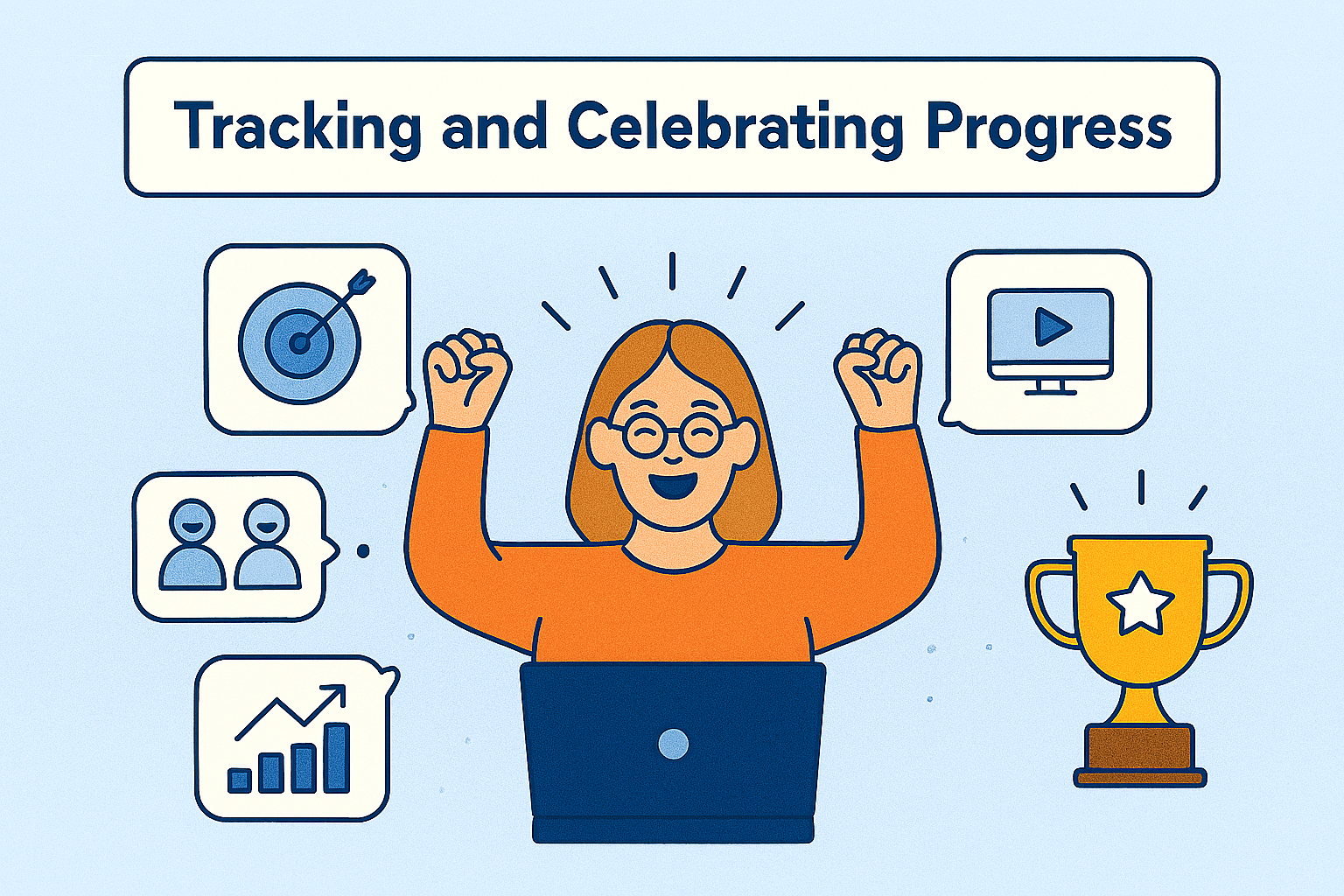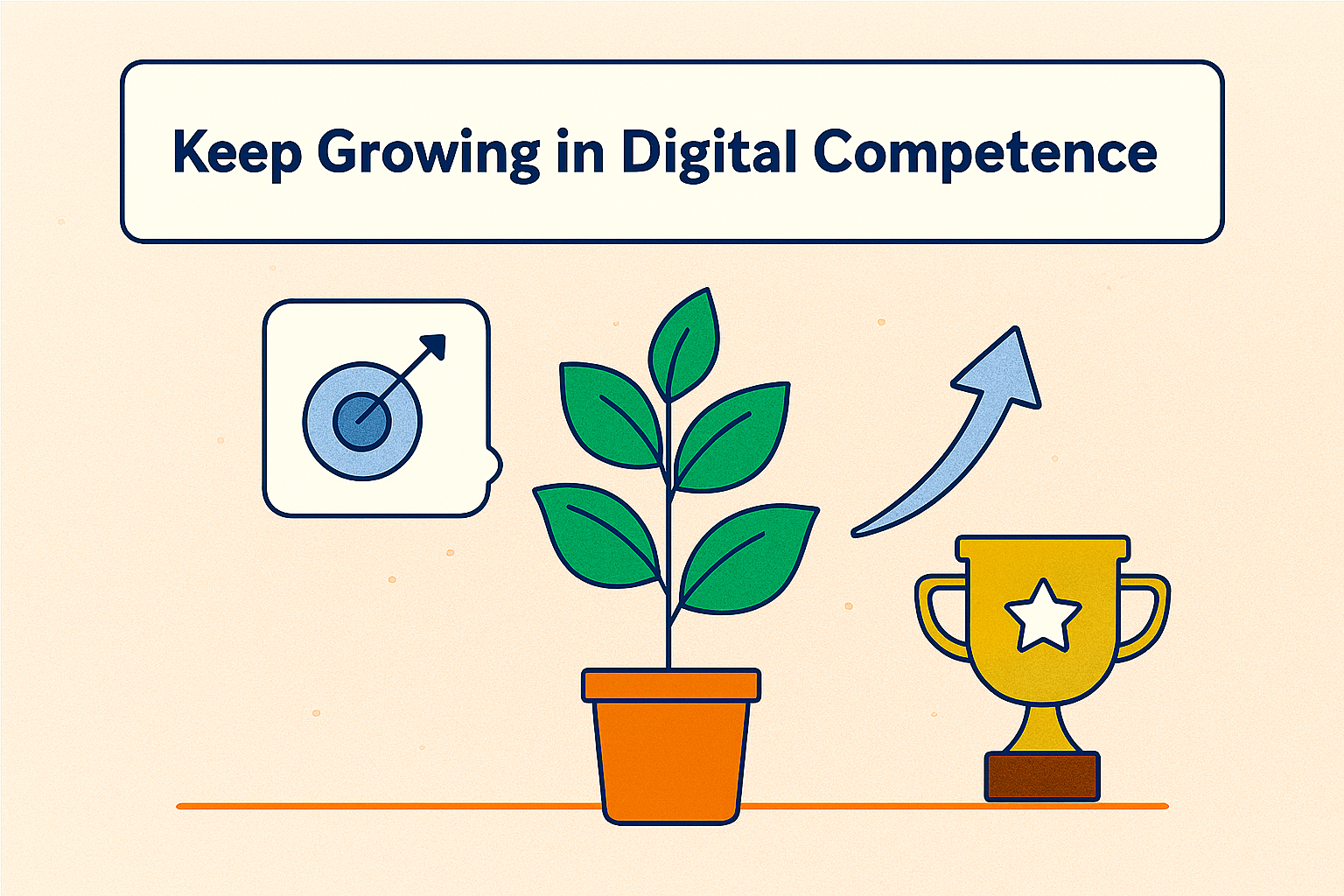
Tracking your digital development starts with making progress tangible. Rather than focusing solely on internal reflection, this stage emphasises concrete, visual records of your growth. Use dashboards, spreadsheets, or checklists to record small, observable actions—like posting a discussion prompt, running a quick poll, or sharing feedback digitally. These records make your incremental improvements visible and allow you to see your skills develop over time.
Hands-on tips:
Sharing your progress with peers, colleagues, or supervisors can boost motivation and help you stay on track. This also builds a supportive environment that encourages learning and experimentation.

Once you’ve made your progress visible and shared it with others, the next step is to actively build on that foundation. Growth in digital competence comes from stretching beyond what you already know, experimenting with new approaches, and steadily raising the level of challenge. Rather than repeating the same digital activities, look for ways to adapt, scale, or combine them to create richer learning experiences for your students.
Hands-on tips:
As you finish this module, it’s time to turn insights into action
and keep building your digital skills:
By combining planning, reflection, experimentation, sharing, and tracking, you ensure your digital competence continues to grow long after completing this module.